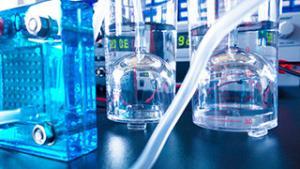 A number of advances have been reported by research teams around the world developing renewable hydrogen production systems that use tin.
A number of advances have been reported by research teams around the world developing renewable hydrogen production systems that use tin.
According the International Energy Authority (IEA) hydrogen can “contribute decisively to solving the environmental problem and securing earth’s energy future”. It is the most abundant element in the universe and when used as a fuel has no emissions other than water vapor and heat. Hydrogen ‘fuel cells’ generate ultra-clean electricity as used in hydrogen buses for example. Key to unlocking this potential are equally clean hydrogen production processes and, of all the several possibilities, catalytic water splitting using renewable energy is widely viewed as the most desirable, if it can be achieved commercially.
Tin-based materials have some remarkable and relevant properties and scientists have been working for some time to use them in water splitting experiments, either using electricity (electrocatalysis) or sunlight (photocatalysis). US startup HyperSolar is already commercialising a photocatalytic tin-sulphur technology.
More than 50 scientific papers on tin have been published so far this year, with tin-sulphur systems continuing to attract most attention. This month a team in India used specially shaped ‘flower-like’ crystals of copper-tin-sulphur, a team in China found that using molybdenum with tin-sulphur ‘surprisingly’ improved efficiency and a second team in China achieved ‘among the best ever reported’ performance by adding silver to copper-zinc-tin-sulphur catalysts.
By 2050 it is predicted that hydrogen will account for 20% of global energy needs but there is a long way to go and many ways to get there. However tin has clearly made a good start towards a simple, ‘earth-abundant’ solution to an improved quality of life in the future.
HyperSolar technology website
Karunya Institute of Technology and Sciences paper, October 2018
Nanjing University of Science and Technology paper, October 2018
Anhui Jianzhu University & Donghua University paper, July 2018
< Back to Hydrogen Generation
< Back to New Technologies
